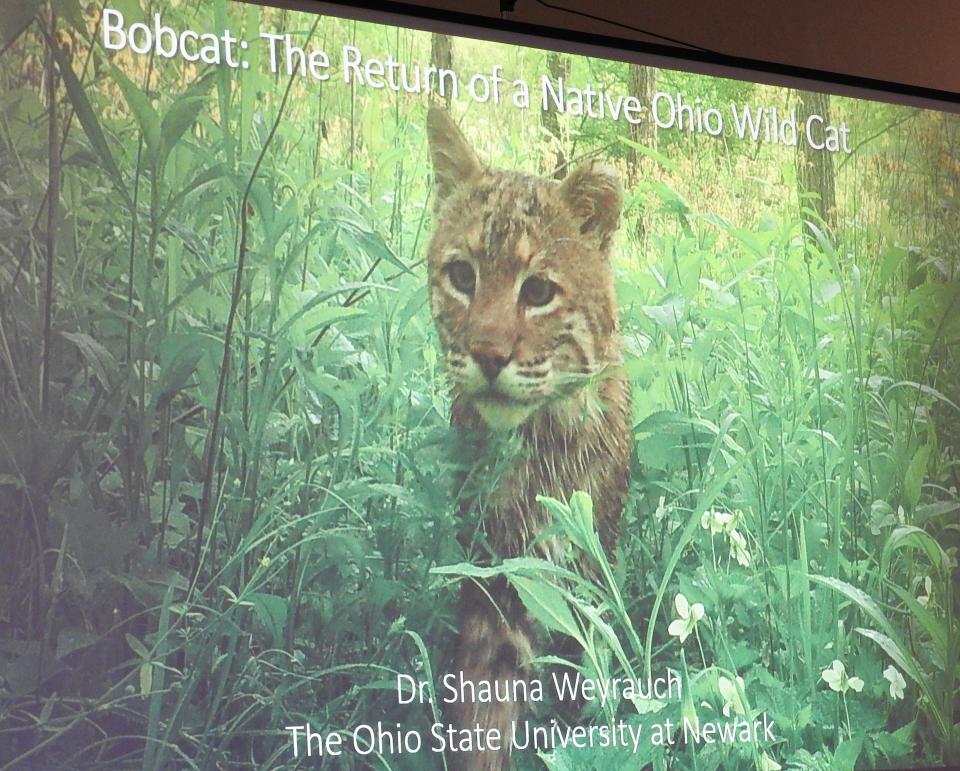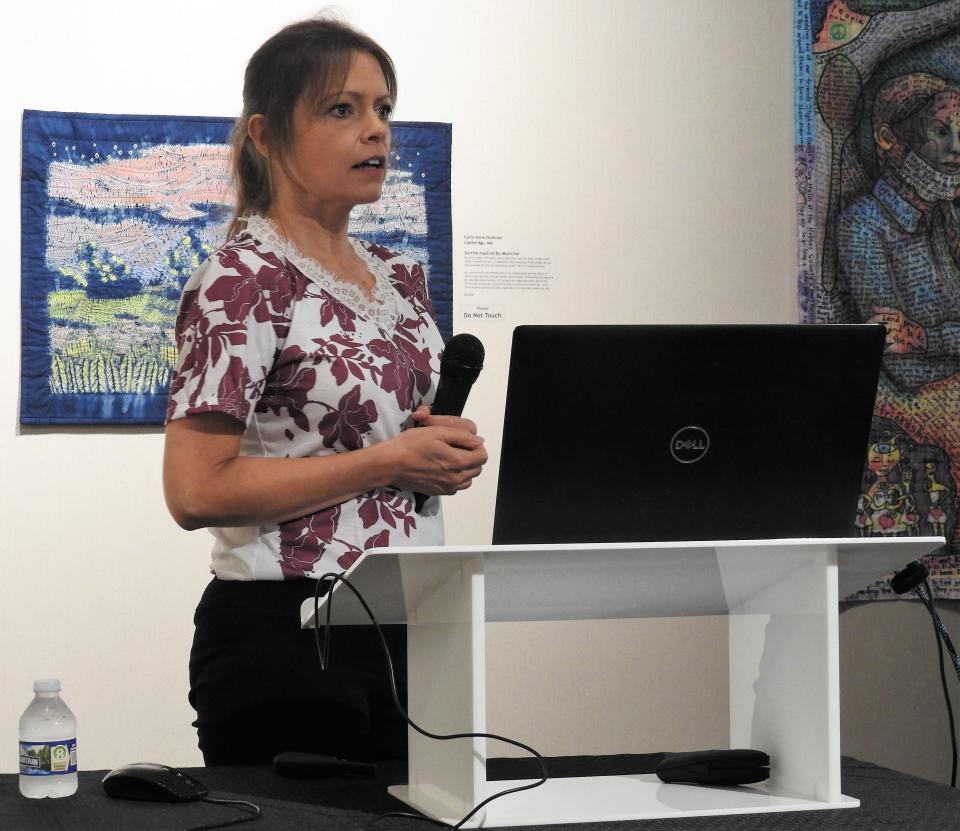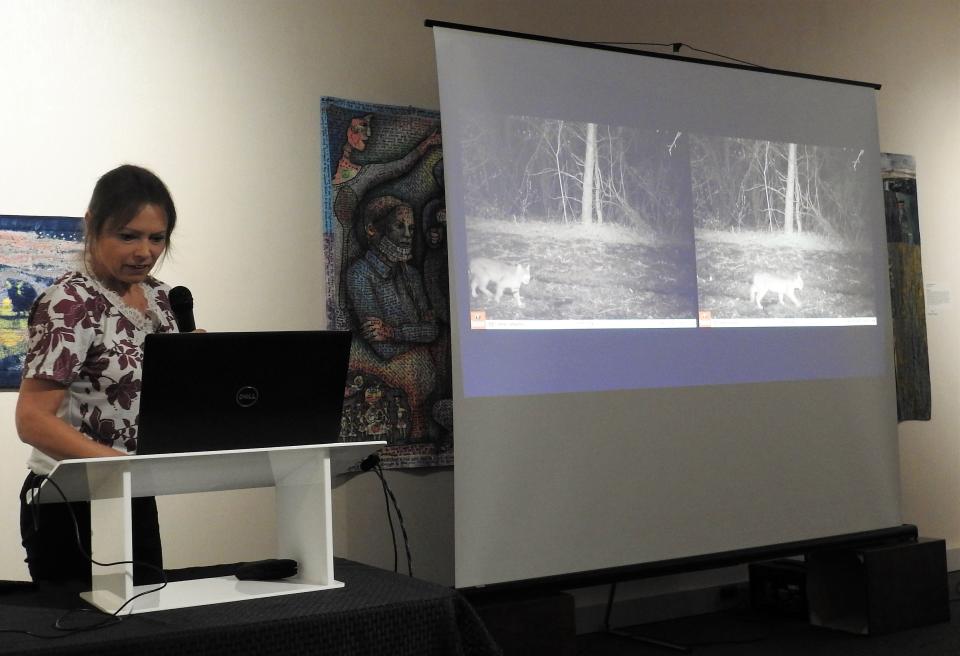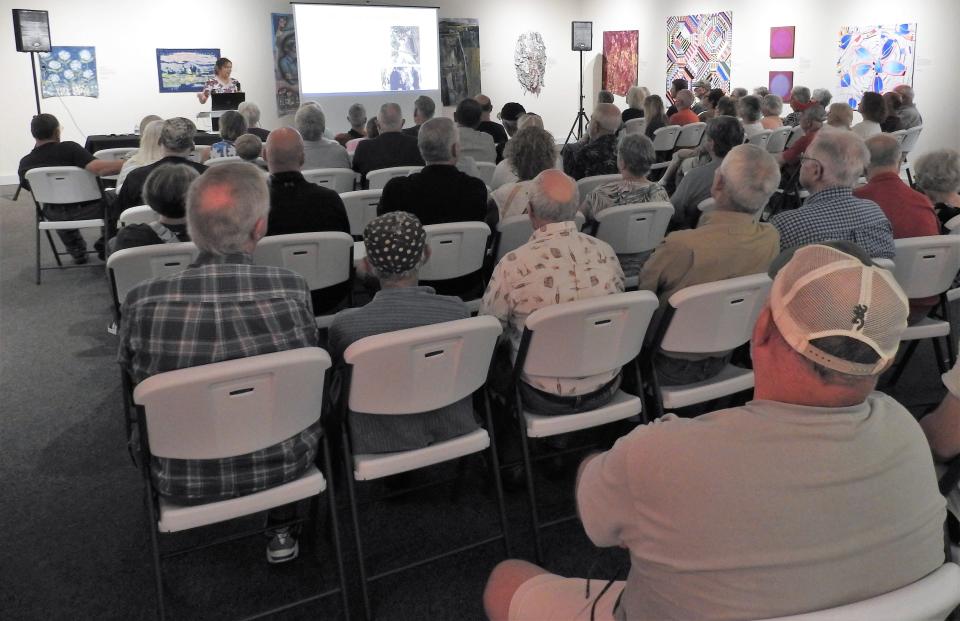'A real charismatic animal': Project Wild Coshocton studies local bobcat comeback
COSHOCTON − Bobcats and coyotes were once prolific in Ohio. Their populations decreased significantly over the years, but they're making a comeback in Coshocton County and across the state.
Shauna Weyrauch, senior lecturer at Ohio State University at Newark, recently presented current findings on their status in the region with photos at the Johnson-Humrickhouse Museum. More than 80 people attended the presentation. Project Wild Coshocton started in 2015 and Weyrauch last gave an update at the museum in 2019.

"I thought this was a cool animal to begin studying. We clearly needed more information on its population trends and habitat requirements and it was a real charismatic animal that could really get students engaged in research," Weyrauch said on origins of the program. "I've just become obsessed with these amazing cats. I now think of myself equal parts bobcat ecologist and bobcat ambassador."
The goal of the project is to survey the backwoods of Coshocton County with a network of trail cameras in search of bobcats. Weyrauch, her associates and undergraduate research assistants have collected more than a million photos of wildlife across Coshocton and southern Holmes counties. Some video footage has been obtained as well.
While bobcats are the focus, data has also been collected on other carnivores like coyotes. Animals like raccoons, opossums, turkey vultures and even a golden eagle have been captured on the trail cameras too.
Mountain lions, lynxes and black bears were also once common to the state, but all had populations decimated by the fur trade and were near extinction by the mid-1800s in Ohio.
These are all species that help regulate prey populations and maintain an ecological balance. Weyrauch knows many might view bobcats and coyotes as dangerous or a nuisance, but they're important to nature. She said by the 1960s, a new appreciation for predators came about.
It was seen that a lack of natural predators allowed for the deer and rabbit populations to run wild, no matter how much hunting was allowed. The heavy eating of the natural foliage led to a decline in insect pollinators, nesting habitats for birds and soil erosion along river banks. It also allowed for the rise of more pesky mesopredators like raccoons and opossums.
"You have a rippling effect through the ecosystem called a trophic cascade," Weyrauch said. "Once we started to see the negative ecological effects of these trophic cascades with the loss of predators, it caused a paradigm shift in the way we thought about predators. We kind of appreciated them a little bit more."

Bobcats making a local comeback
Bobcats in Ohio were listed endangered in 1974, threatened in 2012 and taken off the endangered list in 2014. The bobcat population in the state has rebounded greatly in the past 10 years, Weyrauch said.
Bobcats are moving back into Ohio from Pennsylvania, West Virginia and Kentucky. Tracking travel patterns, Coshocton County was at the upward sweep of the movement and also featured a great natural habitat, making it perfect for study. The American Electric Power Conesville Coal Lands, Simco Wildlife Area and Woodbury Wildlife Area represents thousands of acres of reclaimed mine land as suitable habitat.
A survey by the Ohio Department of Natural Resources in 2015 said there were 450 bobcats in Ohio. Weyrauch said exact numbers for Coshocton are impossible to figure, but some math can give a rough idea. About half of Coshocton has suitable forest for bobcats to live in, approximately 285 square-miles. Females have a home range of six miles and males 16 miles. That means 18 male and 47 female bobcats in the county, assuming maximum occupancy and no home range overlap.

Project expanded into Licking County
A behavioral study started in 2022 to see specifically how bobcats and coyotes coexist in the same habitat. While it's long been theorized they don't get along, Weyrauch theorizes that in an environment with plenty of resources they'll pretty much leave each other alone. The animosity comes from fighting over a limited amount of food, water and shelter.
To test the theory, deer carcasses were placed outside and trail cameras caught how bobcats and coyotes would work around each other to get food from it. Others animals went after the deer too, like raccoons and birds of prey.
"One of our early hypotheses, was that coyotes, being a non-native species to Ohio, might be an impediment to bobcats becoming successfully reestablished in some areas. Some previous research found coyotes could be aggressive toward bobcats," Weyrauch said. "I think it's kind of nuisance. My hypothesis is that we're living here in an area in Coshocton where the habitat is really good and there's a lot of prey availability. If you have more food available, the bobcats and coyotes aren't going to get into a scuff and fight it out."

In 2020, the program expanded to Licking County with eight surveyed sites. Bobcats were only spotted at two, Taft Reserve and Reese Wildlife Sanctuary, which are on the eastern end of the county and were the least visited by humans of the eight.
In 2022, the creation of dens to encourage bobcats in Licking County were done. Weyrauch said other animals, like raccoons and groundhogs, have used the dens, but no bobcats yet.
"If we find evidence that bobcats will use these, we'd like to build more of them, especially in Licking County," she said.
Information and latest findings can be fount at u.osu.edu/wildcoshocton and Weyrauch can be emailed at weyrauch.2@osu.edu.
Leonard Hayhurst is a community content coordinator and general news reporter for the Coshocton Tribune with close to 15 years of local journalism experience and multiple awards from the Ohio Associated Press. He can be reached at 740-295-3417 or llhayhur@coshoctontribune.com. Follow him on Twitter at @llhayhurst.
This article originally appeared on Coshocton Tribune: Through Project Wild Coshocton, researcher studies bobcat comeback

